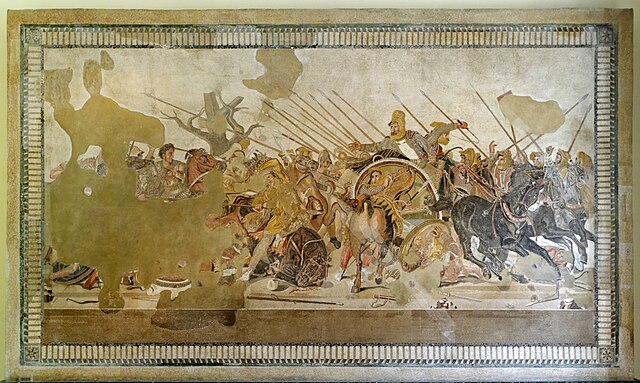Helena of Egypt, whose story looks mighty familiar
Roughly a year ago, I wrote a post about Tamaris, a woman in the fifth century BCE who was the daughter of a painter and an acclaimed artist in her own right. Recently I learned of a similar story, courtesy of novelist Joanne Harris, who is running occasional posts titled “Women You Deserve to Know” on her Threads account.
Helena of Egypt was a painter in the fourth century BCE, active in the period after the death of Alexander the Great in 323 BCE.* Like Tamaris, she learned her craft from her father, an otherwise unknown artist named Timon. And like Tamaris, we know little about her. Our main source is Pliny the Elder (23/24-79 CE), who included her in a list of women artists in his Natural History. She also appears in a list of women named Helena in an encyclopedic work by Photios I of Constantinople (ca 810/820-893 CE), who probably got most of his information from Pliny..
According to both Pliny and Photios, Helena’s best known work was a scene of Alexander the Great’s victory over the Persian ruler, Darius, at the Battle of Issus. According to Photios, the Roman emperor Vespasian (r. 69-79 CE) held what was then an ancient painting, along with other spoils of war, in the Temple of Peace in Rome The painting is long lost, but a mosaic of the same subject found at Pompei is believed by some to be a copy of Helena’s work.
It turns out that Pliny was also Boccacio’s source for writing about Tamaris. In fact, he is our only source for women artists in ancient Greece and Rome. The list is small: Tamaris, Helena of Egypt, Aristarete, Iaia, Eirene, and Calypso. Pliny does not have much information on any of them, though he does suggest that all but one of them had a father who was also a painter. Working from details given by Pliny, later scholars have dated them from the sixth through the third centuries BCE—in other words centuries before Pliny wrote about them.
Perhaps inevitably, some modern scholars have suggested that one or all of them did not exist, for the same reasons that scholars have argued that various women warriors did not exist. *Sigh*
*A time of political chaos as Alexander’s generals, and his older half-sister Cynane (also a talented general), duked it out over the remains of his empire. But I digress.





